April 6, 2022
Plans Meet Plain Old Luck
When I finally got around to the patio’s spring cleaning last weekend, I plopped my metal bunny sculpture out in back for its yearly bath. Years ago, when we rescued our house bunny Harvey, I couldn’t resist adding it to our eclectic outdoors “décor.”
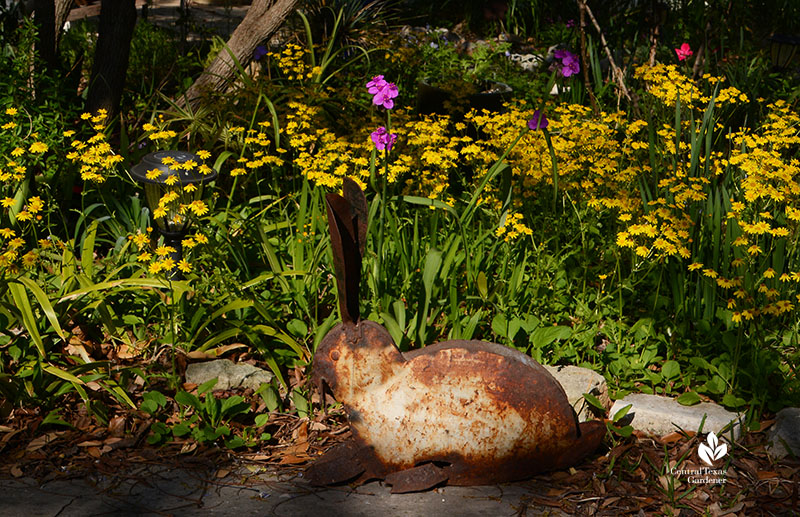
We lost Harvey in 2019 at age 13, but my native golden groundsels and spiderworts have multiplied in leaps and bounds.
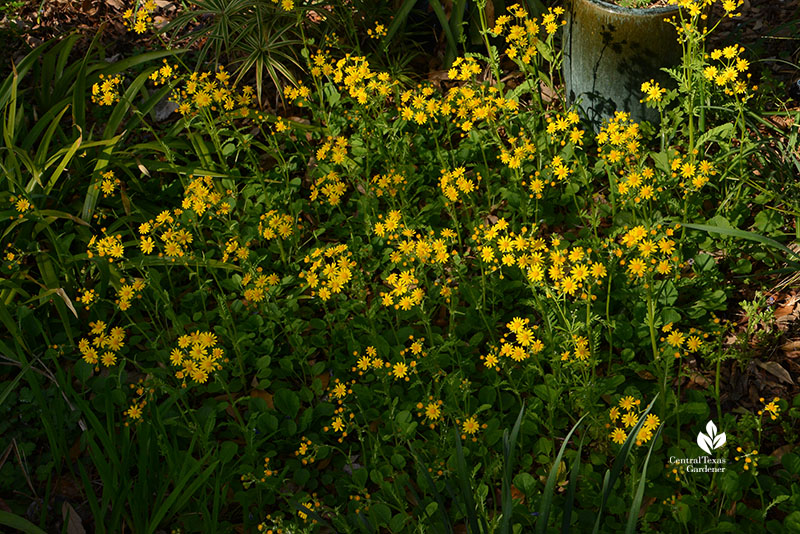
Although pollinators have not been as abundant this year, traffic is getting busier—some so tiny I can barely see them as they dart about.
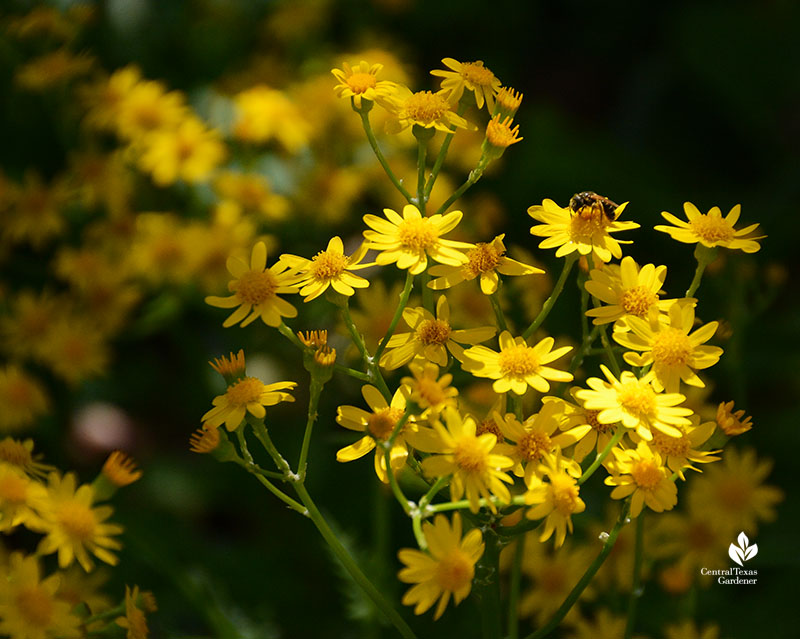
This robust visitor is a tachinid fly, a beneficial insect that parasitizes garden pests.
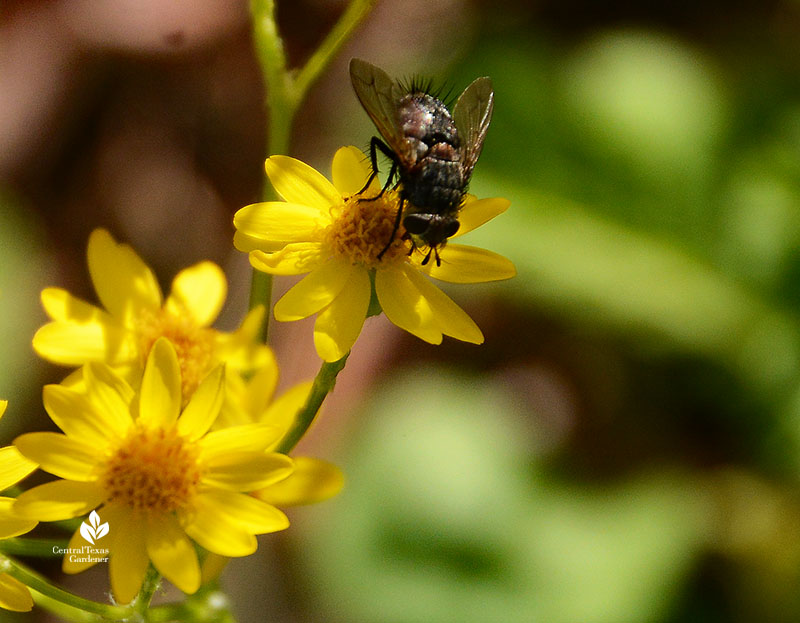
Spiderwort perennials freely cross-pollinate, so it’s fun to see new ones show up from their scattered seeds.
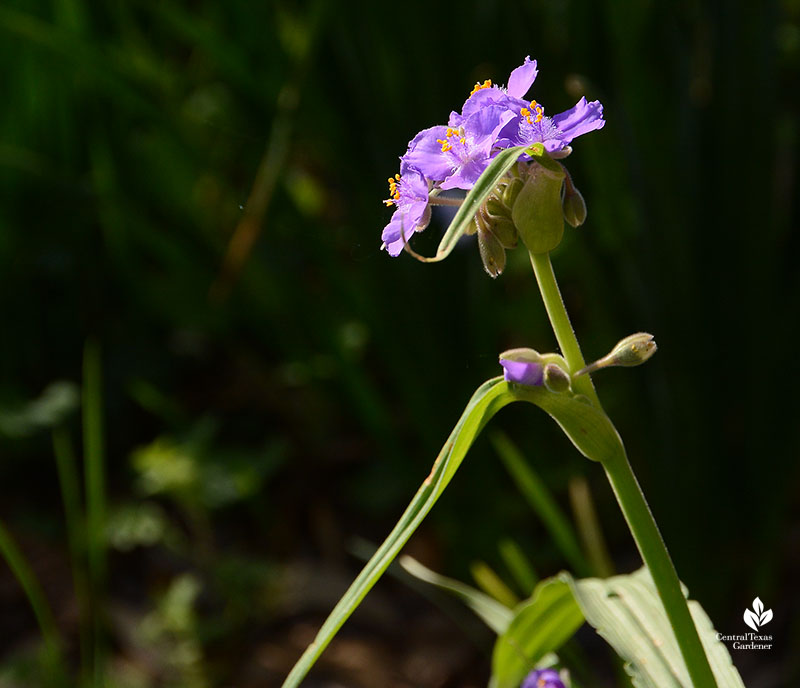
As established perennials, their varied shades of lavender blue to deep pink confirm that indeed I’m on alkaline soil—as we all are in Central Texas.
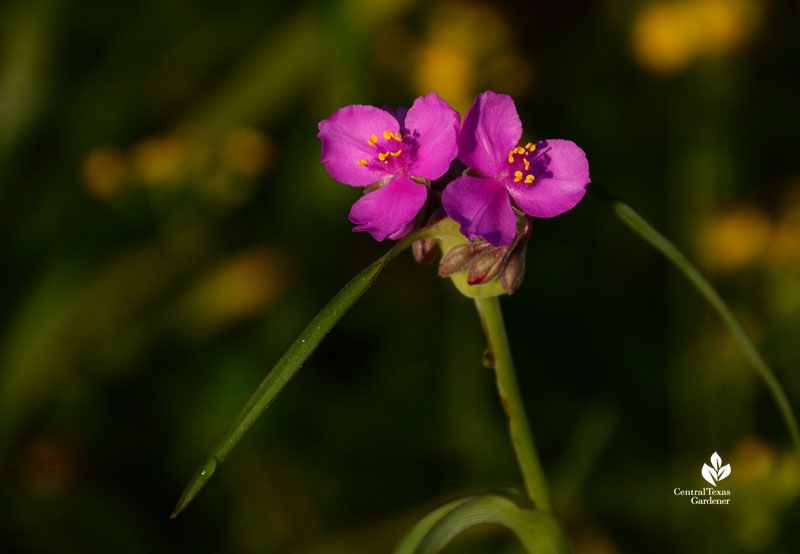
And now and then, I luck into a rare white.
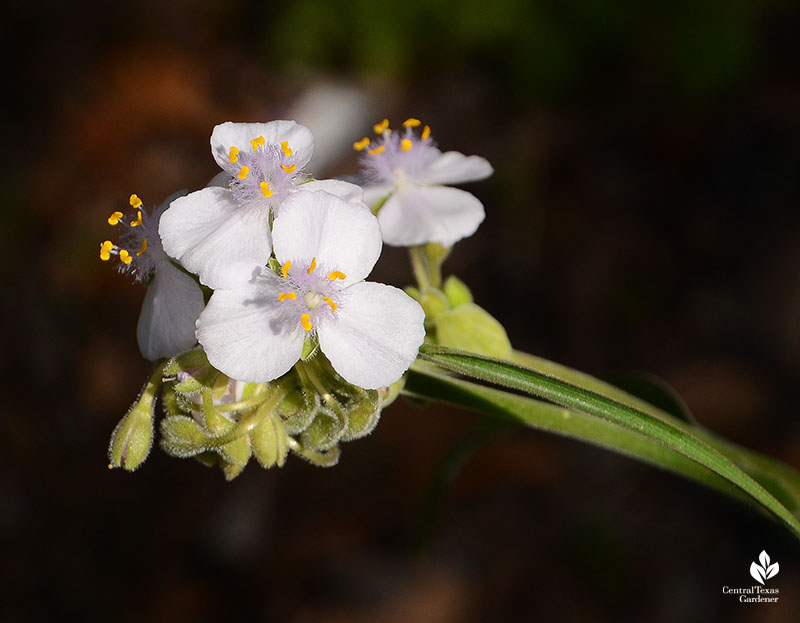
In a bed originally dedicated for herbs and food crops, this spiderwort took up residence with equally generous self-seeding native annual baby blue eyes. Bees and other pollinators don’t have to fly far to fill up.
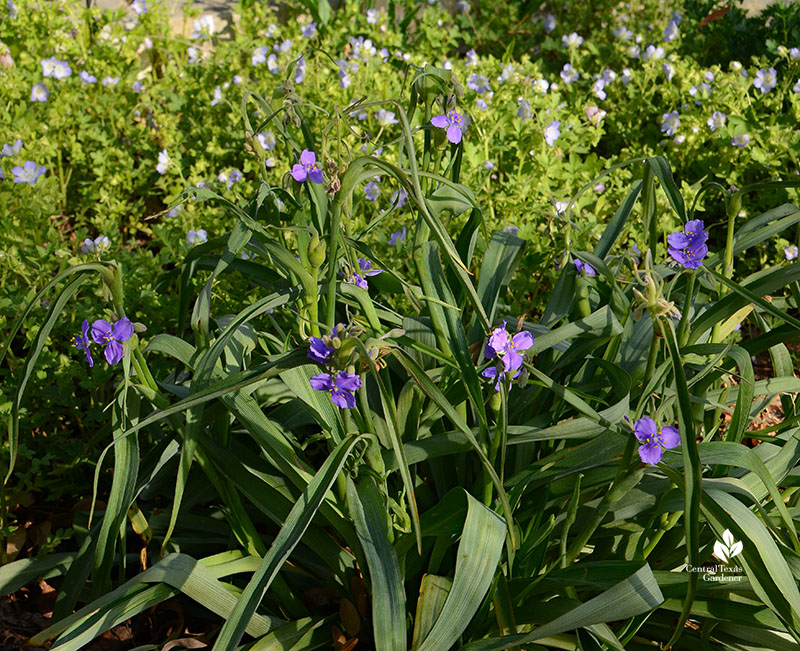
I can count on the spiderworts, but it’s always a treat when my little clump of Spanish bluebells flower. Since I planted them in 2011, they’ve flowered sporadically, so I forget what they are! A charming little coral Freesia laxa bulb seeded itself nearby. Honestly, I think that nature’s the cleverest designer.
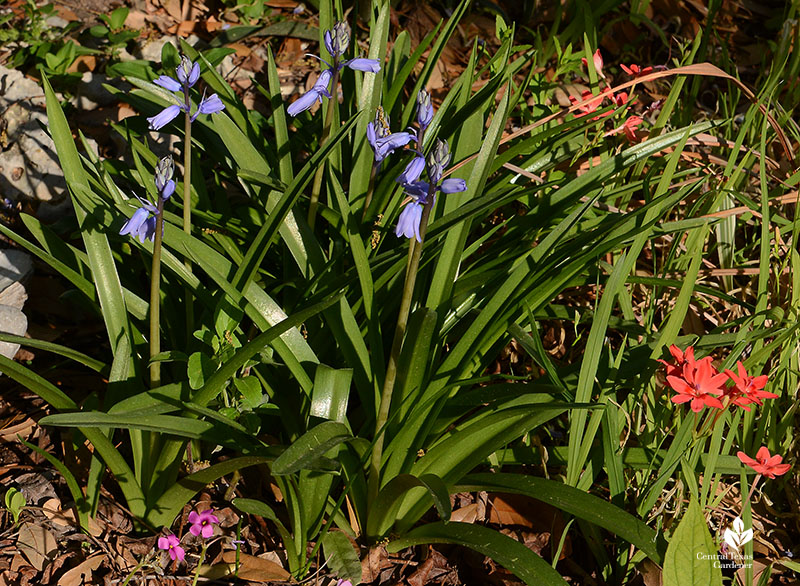
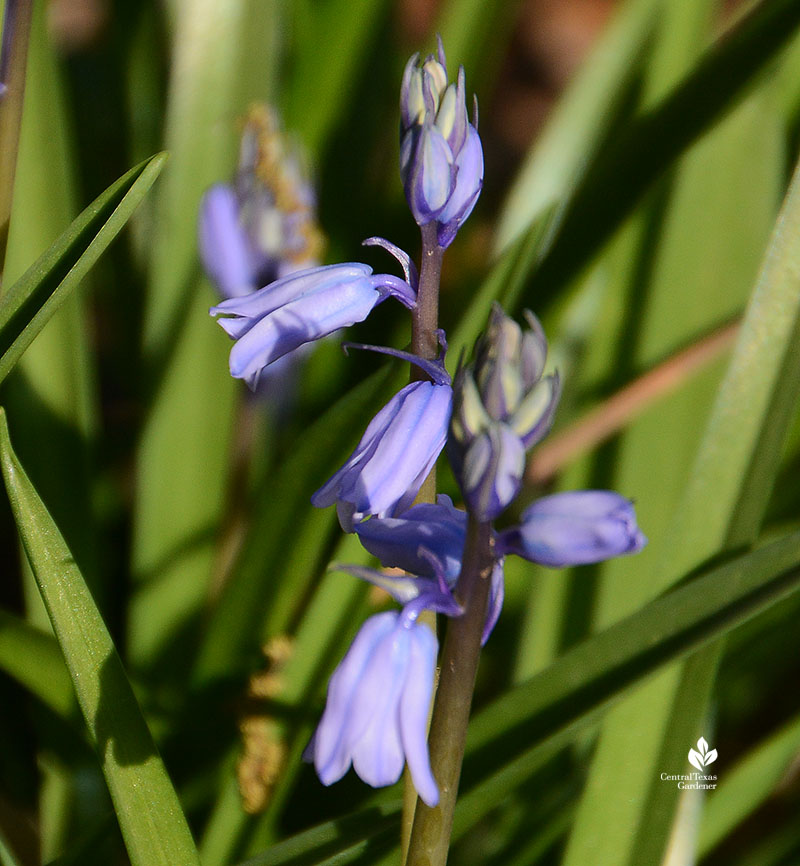
Stability meets surprise again as drought-tough Iris albicans widen their clumps in a design that I did plan. Sort of. You know how that goes.
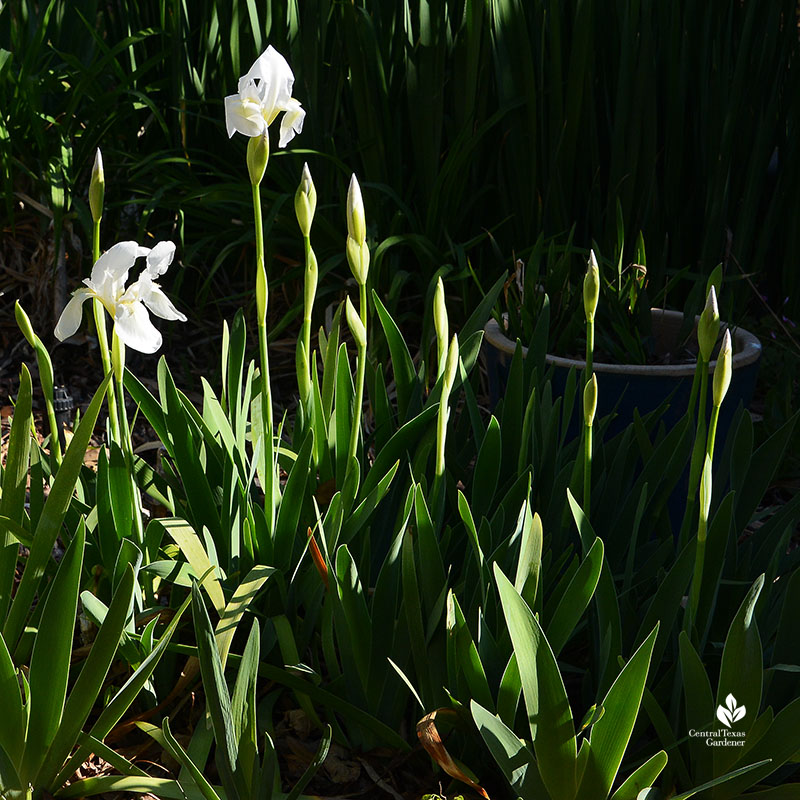
I can’t say that I really planned purple bearded iris against the golden groundsel. I just plunked my first golden groundsels in on the shadier side and at some point planted the iris in the sunniest spot. In this case, I think it was just plain old luck.
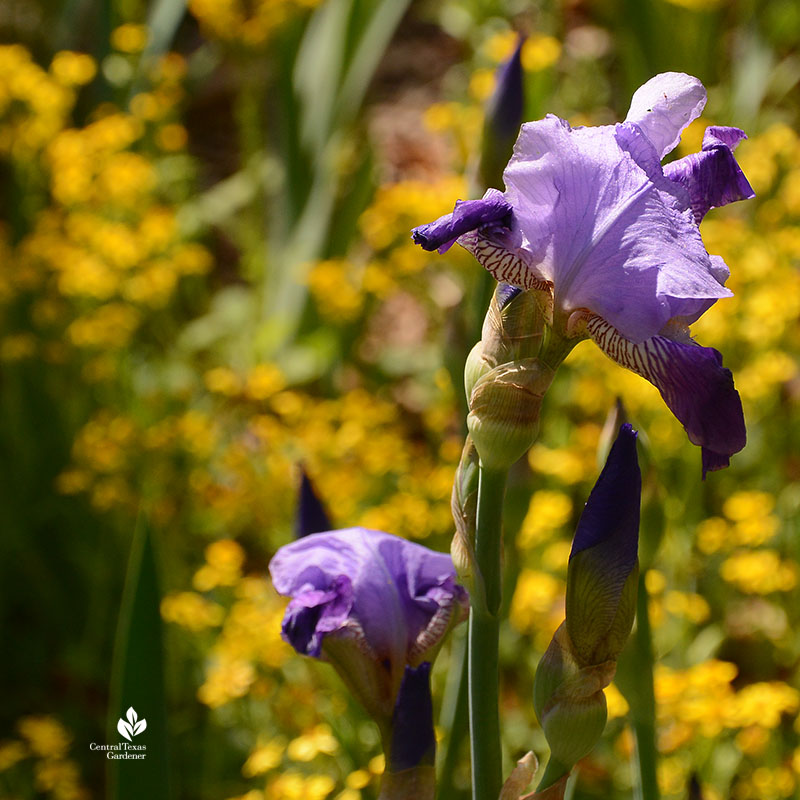
We can all expect unwanted tree seedlings jumping up right now. Very quickly, those elms, pecans, and hackberries develop deep tap roots, and if we delay, it’s really a task to get them out. Long ago on a Backyard Basics segment with Trisha Shirey, she used toolbox pliers. They worked fine.
Then, a few years ago, she discovered Lawn Jaws and showed us how she pulled out roots almost 2’ long. It’s best to do it after a rain when the ground is moist, but here are just a few I pulled a weekend ago! I’ll be out again this weekend on the hunt.
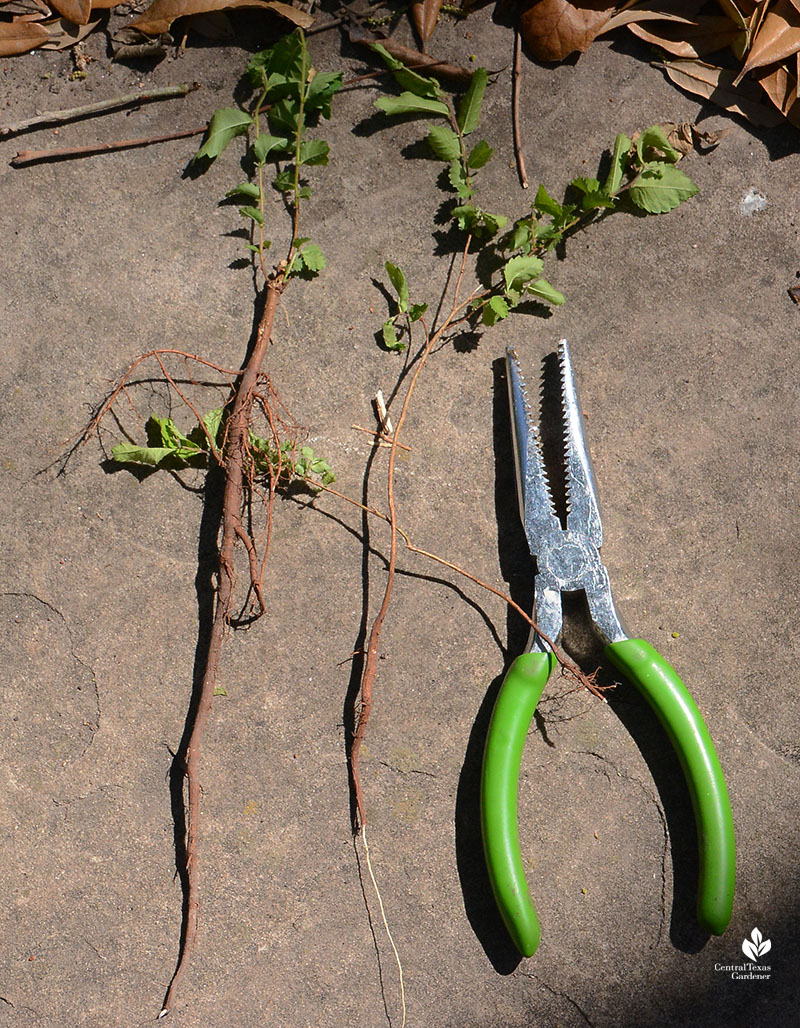
Thanks for stopping by!
Linda

